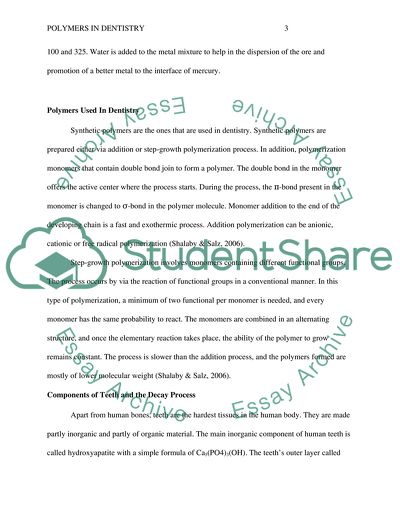Cite this document
(“Organic chemistry: Polymers in dentistry and the tooth filling Research Paper”, n.d.)
Retrieved from https://studentshare.org/chemistry/1694376-organic-chemistry-polymers-in-dentistry-and-the-tooth-filling
Retrieved from https://studentshare.org/chemistry/1694376-organic-chemistry-polymers-in-dentistry-and-the-tooth-filling
(Organic Chemistry: Polymers in Dentistry and the Tooth Filling Research Paper)
https://studentshare.org/chemistry/1694376-organic-chemistry-polymers-in-dentistry-and-the-tooth-filling.
https://studentshare.org/chemistry/1694376-organic-chemistry-polymers-in-dentistry-and-the-tooth-filling.
“Organic Chemistry: Polymers in Dentistry and the Tooth Filling Research Paper”, n.d. https://studentshare.org/chemistry/1694376-organic-chemistry-polymers-in-dentistry-and-the-tooth-filling.


